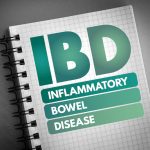Breastfeeding is a wonderful gift you can offer your child, but it is a learned skill that can take some time to master, for both mum and baby. This blog is designed to give you the tools to support yourself in your breastfeeding journey, as well as some tips for coping with some of the most common issues breastfeeding mums encounter.
The Benefits of Breastfeeding
There are a huge range of benefits that come from breastfeeding, for both mother and baby. Some of these benefits include:
- Improved immune protection for baby – breast milk contains high levels of antibodies to protect infants from disease. What’s most amazing is that breast milk is dynamic – your body will produce extra antibodies to protect baby against specific pathogens that your body encounters in your environment.
- Dynamic breast milk composition – in addition to changing antibodies, the composition of breast milk changes to suit your baby’s needs. For example, if baby is going through a growth spurt, your breast milk will provide baby with higher levels of protein and fat.
- Protection against illness – breastfeeding has been shown to protect infants against a number of diseases, including asthma, allergies, eczema, diabetes 1 and 2, and even reduces SIDS risk.
- Protects mums against long term illness risk – breastfeeding reduces your risk of developing certain cancers, including breast, ovarian, and endometrial, and also protects against osteoporosis, heart disease, and diabetes.
Supporting Optimal Lactation
Dietary Strategies
Eating well cannot be underestimated. I recently wrote a post on post-natal depletion so have a look at my “Postnatal Depletion” post here for dietary support and strategies.
Hydration
Breastfeeding requires increased water intake. Breastfeeding women require around 3-3.5L of water each day in order to meet their own needs as well as produce sufficient milk. Opt for filtered water where possible, to reduce your exposure to unnecessary toxins and heavy metals from tap water. Good quality water filters are readily available from health food shops, filter suppliers and Bunnings.
Food As Medicine: Oats
Oats are considered to be a galactagogue (help to increase production). Homemade oat bars or “lactation cookies” made with oats can be a great snack to have on-hand. There are some great recipes online, or you can purchase pre-made lactation cookies.
Herbs
There are a number of herbs that are considered to be “galactagogues” and can be great additions to your breastfeeding journey. It is important that they are prescribed by a trained herbalist however as your babies age and other conditions always need to be considered.
- Fenugreek – a galactagogue, as well as a blood sugar stabiliser, and digestive herb
- Fennel seed – a galactagogue, and also helps to reduce bloating and IBS-type symptoms.
- Goat’s rue – a powerful galactagogue and also helps to reduce high blood sugar (caution in pregnancy)
- Stinging nettle leaf – a galactagogue and amazing nutritive herb that is very high in important minerals such as potassium, magnesium, and zinc.
- Hops – a galactagogue, nervine and phytoestrogen herb. It is also the herb used to make beer and is the reason why some people recommend drinking a stout beer to increase milk supply! (However, alcohol can lower prolaction, the breastfeeding hormone, so it is best avoided.)
- Milk thistle – a well-known liver herb, but also a useful galactagogue!
Many of these herbs are available in herbal liquids and lovely tea blends that can be sipped throughout the day (and can also help you to keep your hydration up!). Fennel and fenugreek can also be added to your cooking (think warming curries and stews) or can be brewed into a chai.
Supplements
Supplements will depend on your individual needs and how depleted you are from pregnancy however during this time it is very important to make sure that you are obtaining the following nutrients via whole foods as much as possible, and by continuing your prenatal multivitamin. Magnesium, iron, Vitamin D, Zinc, Vitamin C and omega 3 fish oil supplements with vegan options are often prescribed. My post on nutrition for postpartum recovery gives valuable information.
Additional Tips for Optimal Lactation and Breastfeeding:
- Offer the breast to your baby often – whenever they seem interested, or at least every 2-3 hours.
- Hold baby skin-to-skin frequently through the day
- Avoid giving supplements or “top-ups” with the bottle unless necessary
- Avoid dummies and bottles if possible
- Feed according to your baby’s needs, rather than following a set schedule.
- Stay in bed and rest, particularly in early postpartum, and prioritise feeding on demand. The housework can wait!
- Don’t forget that breastfeeding is more than just nutrition – it is for bonding and comfort as well. It’s okay to also offer the breast whenever you feel baby might benefit.
- Ensure correct positioning and latch – for diagrams and information on optimal positioning and latch, head to https://thepixelfarm.com/iable/membercontent/BFHandouts/IABLE_BF-Ed_Help_Baby_Latch.pdf and https://thepixelfarm.com/iable/membercontent/BFHandouts/IABLE_BF-Ed_Latching.pdf
- See An IBCLC-qualified lactation consultant for assistance with positioning and latch, if required.
Common Breastfeeding Issues
Pain During Breastfeeding
Breastfeeding should not be painful. If you are experiencing pain during breastfeeding, it’s important to seek advice on why this is happening. There are many reasons why breastfeeding might be painful, such as:
- Over or under production
- Structural anomalies in the breast causing latch issues
- Structural anomalies in baby’s mouth (such as tongue and lip ties) causing latch issues
- Mastitis or clogged ducts
At my naturopathic consultations for new mums, we will be discussing how I may support your unique situation. You may also be speaking to your GP or seeking advice from a qualified IBCLC lactation consultation.

Painful, Cracked and Bleeding Nipples
Nipple pain is a common issue but is not a normal part of breastfeeding and shouldn’t be ignored. If you have cracked or bleeding nipples, it’s important to uncover the cause of the issue to prevent further pain and nipple damage from occurring. Common causes of painful, cracked and bleeding nipples include:
- Poor latch or positioning
- Incorrect use of breast pump, such as incorrectly sized flanges
- Nipple thrush
- Oversupply, causing baby to bite down on your nipple
Once the underlying cause has been determined and addressed, nipple pain shouldn’t be an issue. To lessen pain in the meantime and encourage healing:
- Use lanolin ointment on your nipples after feeds to protect and encourage healing. A cream made specific for you wither herbs including calendula may be appropriate.
- Gently wipe breastmilk onto your nipples to assist in healing
- Keep nipples dry between feeds by using clean cloth nipple pads
Clogged Ducts
A clogged duct occurs when milk is not draining sufficiently out of a particular duct in the breast. This can present as a swollen, lumpy and sometimes painful area in the breast and can be accompanied by redness in the affected area. If you have a clogged duct:
- Continue feeding baby at the breast often
- Pump or hand express between feeds
- Firmly massage the area to help move the lump towards the nipple
- Apply a warm compress onto the affected area
- Try changing baby’s feeding position – move baby so their nose or chin is pointing towards the clogged duct, as this will help to drain this area more thoroughly
Mastitis
Mastitis is an inflammation and/or infection of the breast tissue, often due to a clogged duct. Symptoms of mastitis include pain, swelling, redness, a general feeling of being unwell, and fever. If you suspect you have mastitis, you will be provided with a specific handout on mastitis causes and herbal treatment such as echinacea, probiotics, poke root, vitamin C however some basic advice includes:
- Continue to feed baby often
- Apply warm compresses to the affected area and take warm showers
- Gently massage the area during feeds
- Hand express or pump before or after feeding to relieve pain, if needed
- Use an ice pack after feeding to reduce swelling.
If fever and pain persist, or you notice a red line spreading outwards from the site of inflammation, seek urgent medical care.
Low Supply
Under-production or low supply is a common concern for many breastfeeding mothers; however it is often easily remedied by addressing the underlying cause. Some common causes of low initial supply include:
- No breast changes during pregnancy – most women experience at least some changes to their breasts during pregnancy, such as increased breast size, or darkening of the nipples and areolas. A lack of changes in the breasts during pregnancy can sometimes coincide with low supply.
- Low levels of breast tissue – insufficient glandular tissue, also known as breast hypoplasia, can make breastfeeding difficult
- PCOS: some women with PCOS have difficulties with supply, however others are able to breastfeed successfully.
If you have already established breastfeeding and have previously had a good supply, but are now finding your supply is dropping, it may be due to issues such as:
- Not enough feeding – supply follows demand when it comes to breastfeeding. Offer baby the breast frequently (every 2 to 3 hours in the beginning and then 8-12 times every 24 hours)
- Feeds are too short – avoid timing feeds and simply allow baby to feed as long as they need to until they come off the breast by themselves. Some babies may only feed for 5-10 minutes, but others might spend up to 30 minutes or more. (Note: newborns need to have sufficient rest in between feeds. If your newborn is spending extended periods of time feeding and you feel they are not getting enough, seek advice from an IBCLC.)
- Topping up with formula – Supply follows demand, so if your baby is getting additional feeds with formula top-ups, there will be less demand for breast milk, causing a drop in supply.
- Hormonal changes – some women find their supply drops during ovulation and menstruation.
- Maternal illness – sometimes women may find their supply drops temporarily if they are ill.
- Substances – certain substances such as caffeine, nicotine and alcohol can affect supply and let down.
To help increase your supply:
- Follow the “optimal lactation” steps listed above
- Try offering additional “snack feeds”
- Offer your baby the breast for comfort, instead of using a dummy
- Offer both breasts – but be sure to fully empty the first breast before offering the second. Generally, it is best to wait until baby comes off the breast by themselves and then swapping sides.
- Ensure baby is positioned well and has a good latch – if you are unsure, speak to an IBCLC
- Feed baby in a comfortable, relaxed position away from distractions and noise.
- Massage your breast, working towards the nipple, or compress the breast as baby feeds, to help fully empty the breast.
- Remember that even if you are not able to exclusively breastfeed your baby, any amount of breastmilk is giving your baby amazing benefits!
Over Production and Engorgement
Sometimes women will produce too much milk, causing pain for the mother and frustration for baby. Signs of over production include:
- Baby is very fussy and restless during feeding and may arch their back and cry
- Baby bites down on your nipple (in an attempt to slow down milk flow)
- Baby may be very cough and splutter during feeding, especially during let-down
- You may feel a very forceful letdown
- You may experience frequent clogged ducts or mastitis
- Your breasts don’t feel like they are sufficiently empty after feeding
Causes of oversupply include:
- Overactive thyroid
- Excessive, frequent pumping – some women will pump early and often in order to build up a bank of frozen milk
- Timing feeds and switching sides after a set number of minutes, not letting baby fully drain the breast
- Baby breastfeeding frequently for comfort can also increase supply
- Some mums simply produce more milk than others!
This over supply can lead to engorgement or hardening of the breast as it becomes very full of milk. To relieve engorgement:
- Apply a warm cloth to breasts or have a warm shower before feeding to help soften the breast and encourage let-down. If your breasts are extremely hard and engorged, do not use heat – cold applications only.
- If baby is having trouble latching because of breast fullness, hand express some milk or use a breast pump for a few minutes first before feeding.
- Gently massage your breasts between feeds
- Hand express between feeds to relieve some of the pressure, but don’t overdo it – you don’t want to further increase supply!
- Apply cold cabbage leaves or cold packs to breasts for 15-20 minutes after feeds
Supporting new mums on restoring health & nutrients after baby is born is critical for a heathy breast feeding experience. Breastfeeding issues can be terribly distressing for any new mum and for baby, so I offer guidance and treatment and introductions to other specialists where needed.
Contact me today for more information or book an appointment at our award winning naturopath in Sydney‘s Inner West.

References
Australian Breastfeeding Association. (2022). Australian Breastfeeding Association. breastfeeding.asn.au
Australian Breastfeeding Association. (2022). Polycystic ovarian syndrome and breastfeeding. https://www.breastfeeding.asn.au/resources/polycystic-ovarian-syndrome-and-breastfeeding
Bone, K. (2003). A clinical guide to blending liquid herbs: Herbal formulations for the individual patient. Elsevier.
Institute for the Advancement of Breastfeeding & Lactation Education. (2017a). Breastfeeding after a Cesarean Birth. https://thepixelfarm.com/iable/membercontent/BFHandouts/IABLE_BF-Ed_Cesarean.pdf
Institute for the Advancement of Breastfeeding & Lactation Education. (2017b). Latching. https://thepixelfarm.com/iable/membercontent/BFHandouts/IABLE_BF-Ed_Latching.pdf
Institute for the Advancement of Breastfeeding & Lactation Education. (2017c). Positioning to help your baby latch well. https://thepixelfarm.com/iable/membercontent/BFHandouts/IABLE_BF-Ed_Help_Baby_Latch.pdf
Killings, N. (2020). Plugged ducts and mastitis. https://www.lactationtraining.com/resources/handouts-parents?task=document.viewdoc&id=45
Krumbeck, E. (2015). Herbs to increase supply: A guide to galactagogues. https://naturopathicpediatrics.com/2015/07/15/herbs-to-increase-milk-supply-a-guide-to-galactagogues/
La Leche League International. (2022). La Leche League International. llli.org
Rosenblum, N. (2022). Breastfeeding 101: Q&A with lactation expert Nadine Rosenblum. https://www.hopkinsmedicine.org/health/wellness-and-prevention/breastfeeding-101-qanda-with-lactation-expert-nadine-rosenblum










